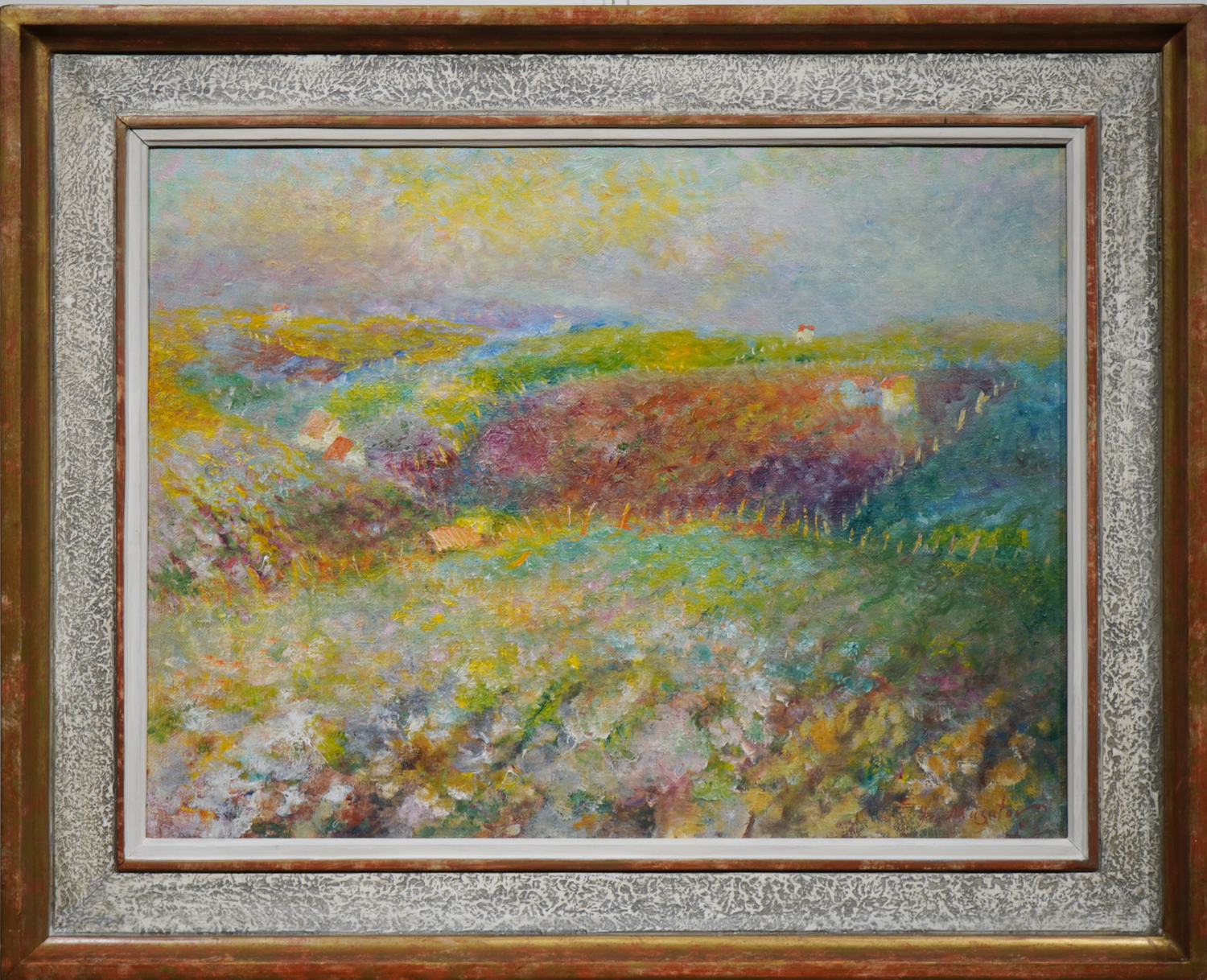Grigorij Musatov
1889 Buzuluk – 1941, Prague
Grigorij Musatov grew up in an artistic family: his father, Alexei, was a prominent icon painter; and his uncle, Viktor Borisov-Musatov, was a pioneer of Russian Symbolism. Musatov grew up in Buzuluk and trained as an art student in Penza, Moscow, and Kyiv. Early artistic influences included Kuzma Petrov-Vodkin and Mikhail Vrubel.
In 1917, Musatov married Věra Jeljaševičová, from an Orthodox Jewish family. At the outbreak of the Russian Civil War, he joined the White Army but later deserted and, using false documents, crossed Siberia to reach Vladivostok.
In 1920, he and his wife were able to sail to Europe in the company of Czech legionnaires, and settled in the fledgling Czechoslovakia. After working as an actor and artist in an itinerant Russian theatre, Musatov found employment as a drawing teacher at the Russian School in Prague’s Strašnice.
His friendship with the painter Jan Zrzavý led to his admission to the Artists’ Forum (Umělecká Beseda) in 1923, and four years later he held his first solo exhibition in Prague’s Aleš Hall. Musatov was also a member of the Scythian art association led by Sergej Mak, which promoted pan-Slavism.
He participated in joint exhibitions of Russian exile art in Paris in 1932 and 1938. In 1936, he obtained Czechoslovak citizenship but shortly afterwards succumbed to a heart attack, likely triggered by the news of the Nazi invasion of the USSR. His one daughter, Eleonora, also became a painter, who exhibited with Chagall.



